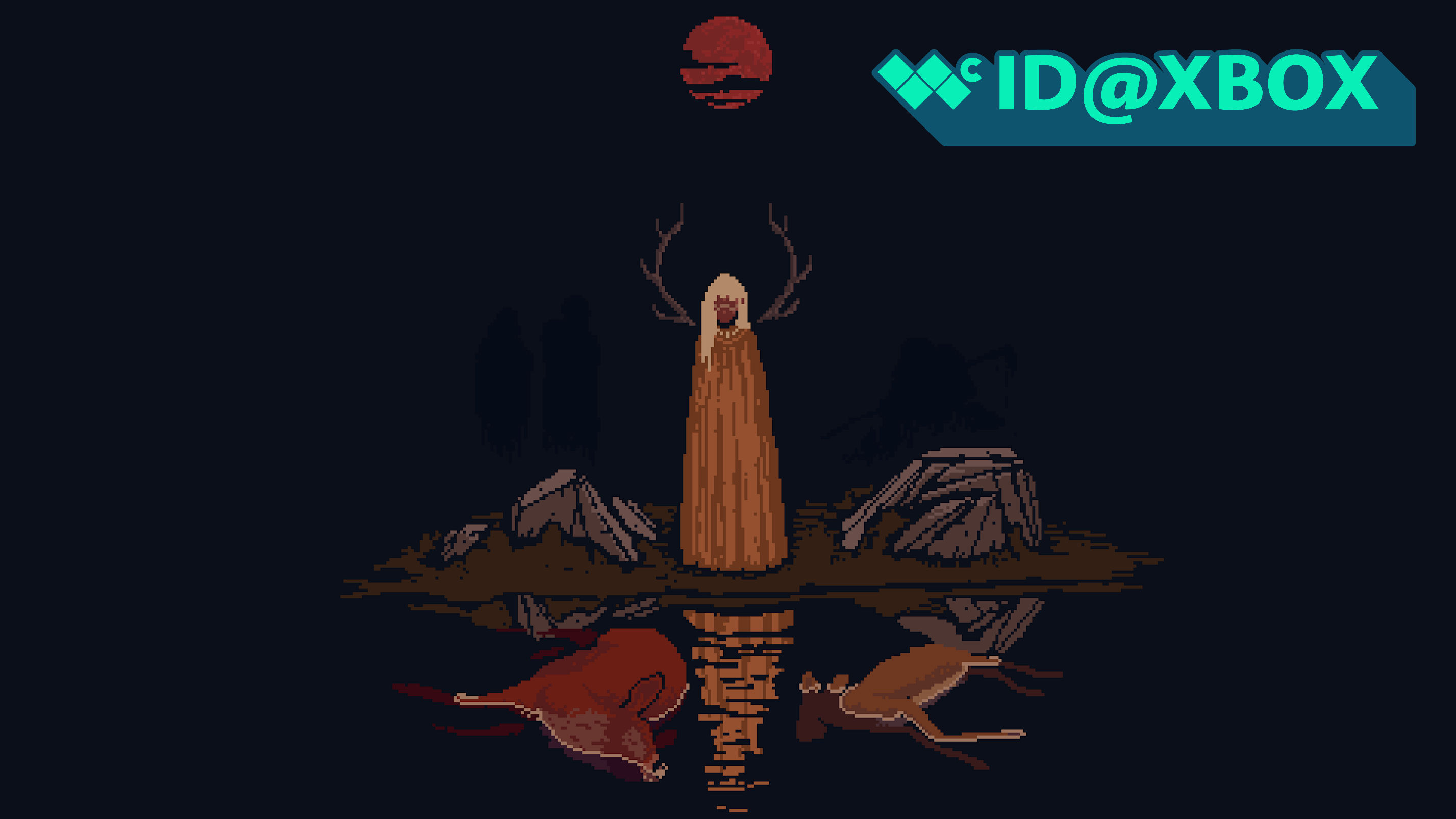Gwent: The Witcher Card Game is far more awesome than your average trading card game
I played The Witcher's standalone card game, Gwent. I thoroughly expect it to take over my life.
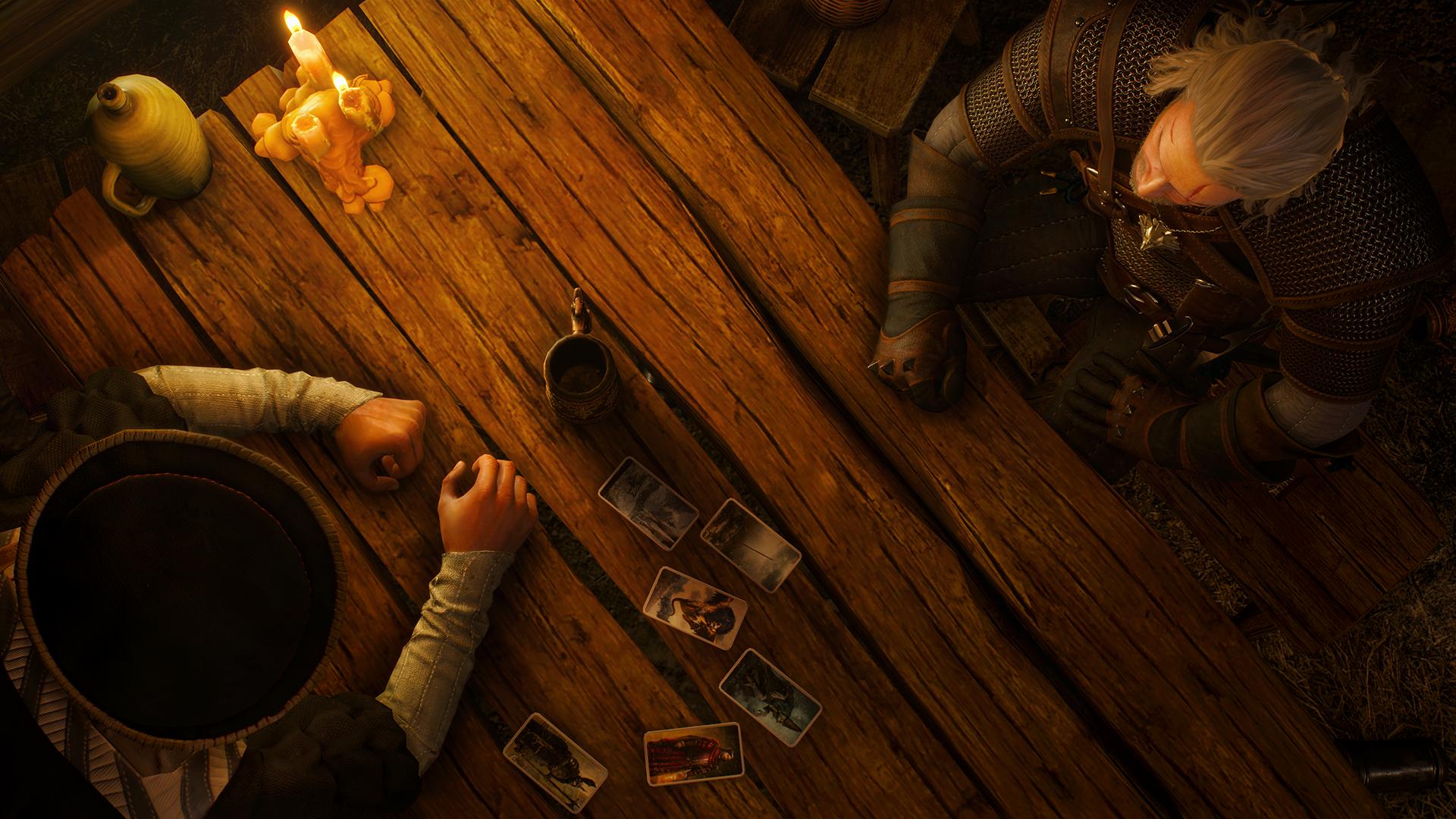

At E3 2016, I was lucky enough to play (and win) a round of Gwent, an upcoming trading card game based on The Witcher universe. The game first appeared in The Witcher 3, and due to its popularity, CD Projekt RED have spun it out into a standalone title. However, in true CD Projekt RED fashion, Gwent is far more than your average trading card game.
What is Gwent?
Gwent is heading to Xbox One and PC as a beta this September, with a PS4 version to follow soon afterward. A standalone Gwent is a pretty obvious move for the studio, given its popularity in The Witcher 3, but also considering the runaway success story of similar games like Hearthstone.
Gwent makes up one of The Witcher 3's many side objectives, allowing players to battle, trade, and even perform quests around the mini game. The Collector's Edition of The Witcher 3: Wild Hunt even came with physical Gwent cards, allowing you to play the game in the real world.
CD Projekt RED acknowledged that Gwent was originally designed to be a single-player experience. Indeed, my card deck in The Witcher 3 is practically unbeatable at the moment, making quests and other Gwent challenges somewhat trivial.
Gwent as a standalone experience has been fully rebalanced for competitive play. Like Hearthstone, Gwent is intended to be accessible to play, but challenging to master, and I certainly got a sense of that with my hands-on session.
Gwent matches are won best two out of three, and cards are the game's only resource. Bluffing and deceiving your opponent is an important path to victory, and if you've played The Witcher 3, at least some of the cards and strategies do feel familiar.
The Gwent board is split into three segments per player and is supposed to mimic a battle between armies. The front row is for melee, the second row is for ranged, and the third row is for siege weapons. Every turn, you play a new card. Most unit cards have a score attached, and the cumulative score of all the cards in play contributes to your overall power. If your power score is higher than your opponent's, then you win the round. Best two out of three wins the game. It sounds simple enough, but the multitude of modifiers, status effects, unique character card abilities and more elevates Gwent far beyond its basic premise.
All the latest news, reviews, and guides for Windows and Xbox diehards.
Hands-on with Gwent
For my hands-on demo, I played against the chap sitting opposite me. Both of us selected a pre-made Northern Realms deck. Similarly to other trading card games, Gwent features multiple decks, in this case inspired by The Witcher 3. Four decks were available in my demonstration, with an extra on its way for the game's planned closed beta. The Northern Realms deck focuses heavily on siege weapons; Skellige focuses on resurrecting cards already removed from battle; Scoia'tael relies on mobility and subterfuge; and Monster decks exploit bad weather cards which neuter cards in certain segments of the board.

As noted by CD Projekt RED, they retuned Gwent for balance in a competitive environment. Some cards you might be familiar with from the single player version have been altered, and even in my brief demo, there were dozens of new cards I hadn't seen before.
Bluffing and deception are as important as the deck you bring to the table, and it was that knowledge that helped me beat my opponent for our demonstration. I drew a decoy card for my first hand, which allows you to remove a card from the battlefield and put it back into your deck. I baited the enemy player into spending some powerful cards by using some powerful cards of my own. I decided to concede the first round to him.
In the end, I emerged victorious, primarily due to my tactical plays in the first round. And it felt damn good.
I placed a spy card into his ranks, gaining two cards for my hand, further inflating his score. I decoyed back one of my more powerful cards on the battlefield, then passed the round, allowing him to win by a sizeable margin – but he'd wasted more cards than me as a result. It's a similar strategy I've used in the single player version, but it seemed just as sound versus other players as well.
The Northern Realm's passive allows you to draw an extra card if you lose a round, so with a decoy, my spy card, and the deck passive ability, I had far more cards to use for the next two rounds against my opponent.
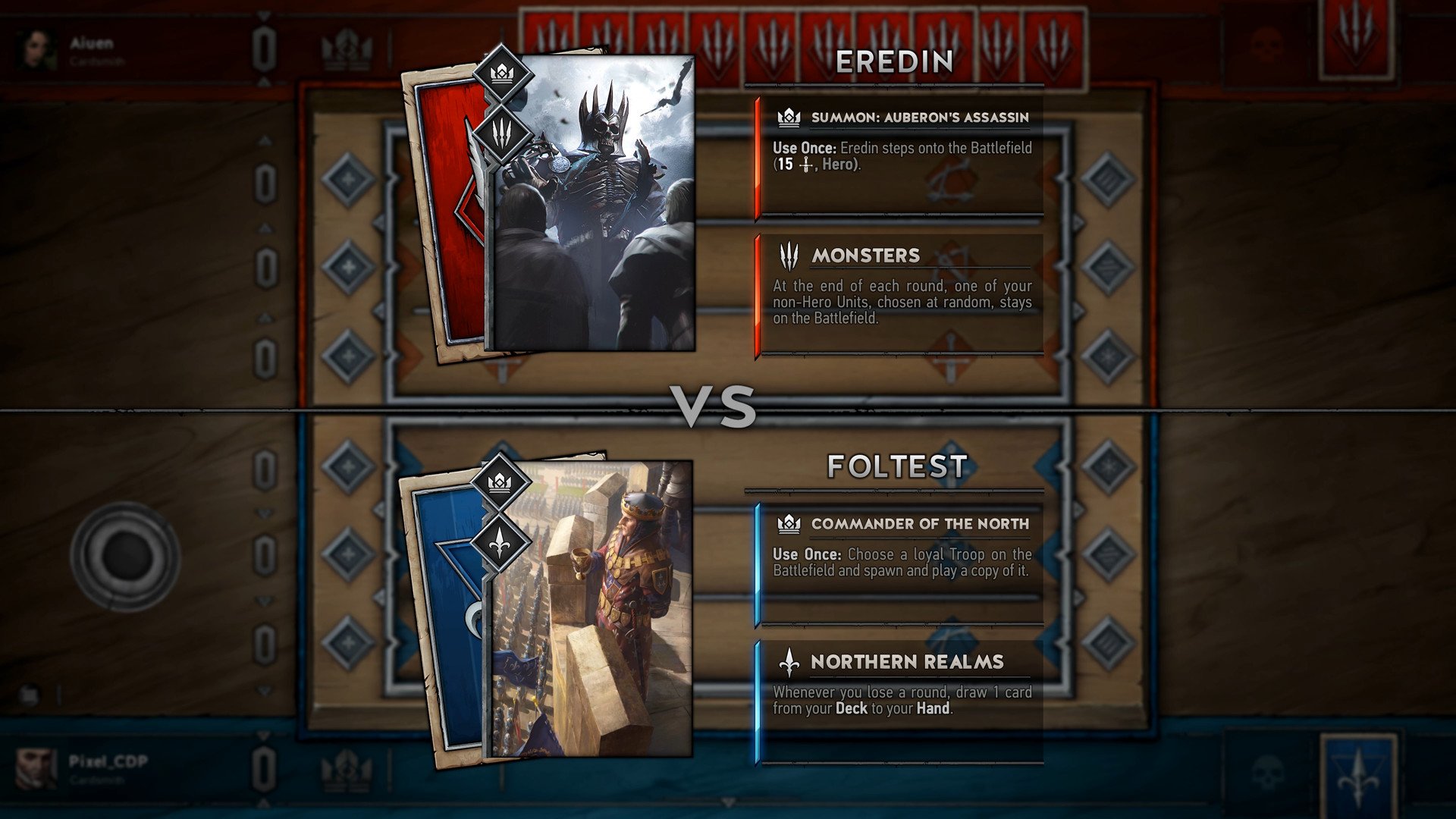
In the final round, I played a hero card, Triss Merigold, and when doing so I was presented with two different abilities for her to use. Some hero cards like Triss have single-use abilities attached to them when they're put in play. I could either pick between an ability that removed weather effects from the board, or Scorch, the most powerful card on the battlefield. Considering my enemy had played a card with a very high score of 15, I chose Scorch, which removed his card from battle entirely.
Going above and beyond seems to be a pervasive ethos at CD Projekt RED.
He also played Triss, used Scorch, and removed my most powerful card from the battlefield as well, but my most powerful card wasn't particularly strong. He'd have been smarter to save Scorch to find out if I had an even more powerful card waiting in my hand. My next move added an adverse weather effect to the ranged row on the field, reducing the power of his units positioned there. The only ranged unit I had was Triss, and hero cards are immune to many effects (including positive ones), so putting bad weather onto the field didn't hinder me at all.
In the end, I emerged victorious, primarily due to my tactical plays in the first round. And it felt damn good.
Beyond the gameplay itself, Gwent has undergone a multitude of visual enhancements that improve the feel of the game as a standalone title. The cards are wonderfully detailed and have a 3D parallax effect when you manipulate their position. Some of the cards are animated as well, making the experience all the more magical.
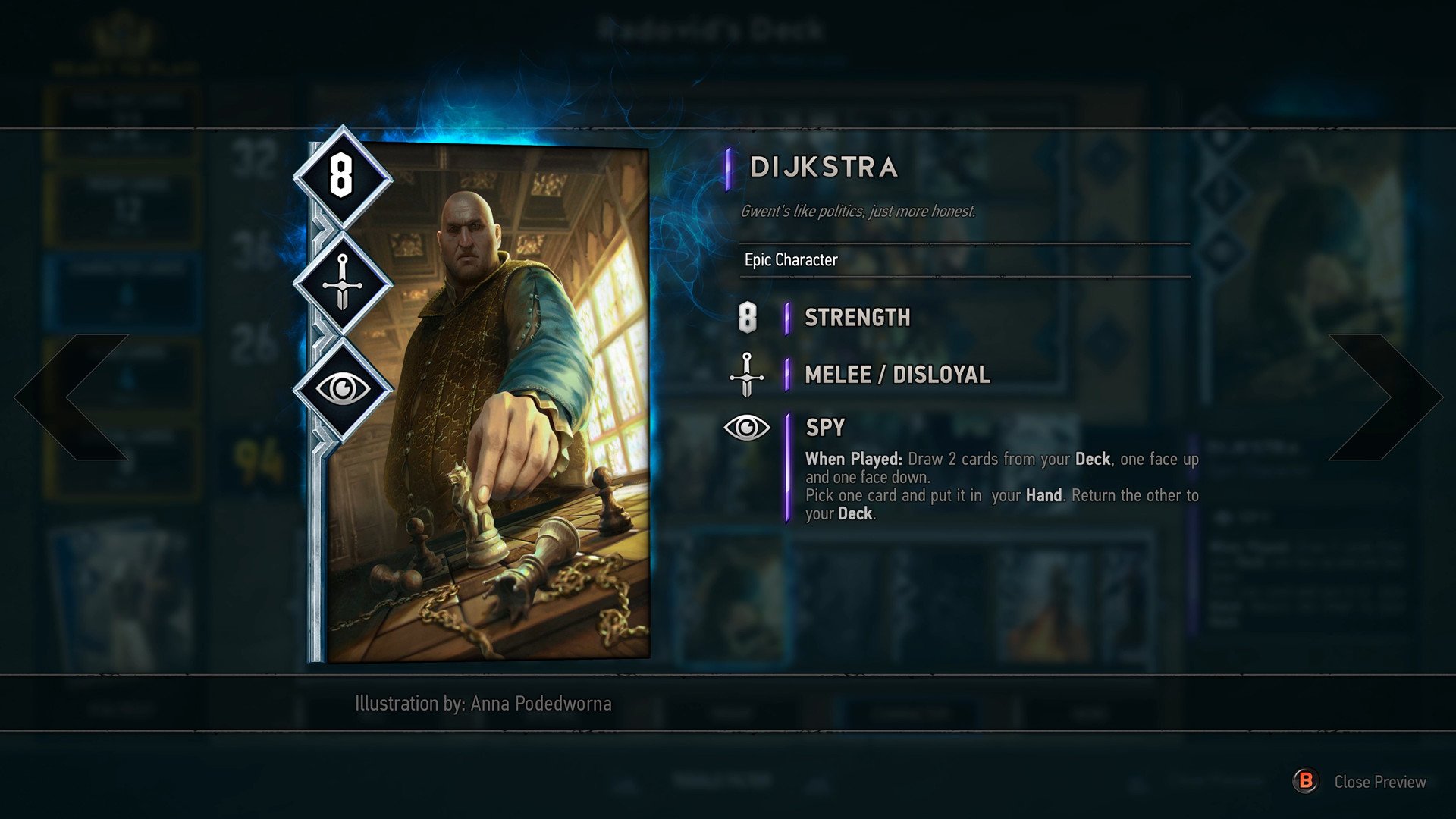
A chap at the presentation whose name I sadly missed, told me that he'd obsessively coded Gwent for The Witcher 3 in his spare time, and had no idea it would emerge as one of the game's most beloved aspects. Going above and beyond seems to be a pervasive ethos at CD Projekt RED. It's with that knowledge in mind that I'm happy to report Gwent is not your average trading card game.
Putting the RPG in TCG
Behind closed doors, I learned what CD Projekt RED truly meant when they said that Gwent has a full single player campaign. It features fully voiced quests, an isometric overworld, and branching dialogue choices. I was thoroughly blown away when the presentation shifted towards the campaign, only to hear Geralt's dulcet tones speaking in a JRPG-like animated scene. Gwent allows players to participate in untold Witcher stories, featuring characters both new and old. The characters are fully voiced, using actors from The Witcher 3, and play out in comic book-style scenes.
Gwent allows players to participate in untold Witcher stories, featuring characters both new and old.
Geralt had been hired by a mercenary group to find a nobleman's daughter lost in a dark forest. Upon finding the girl, they discover that she's in shock, accompanied by a dead body, and is unresponsive. You can make choices on how to proceed, but in our demo, we had the girl join our party to venture away from the woods.
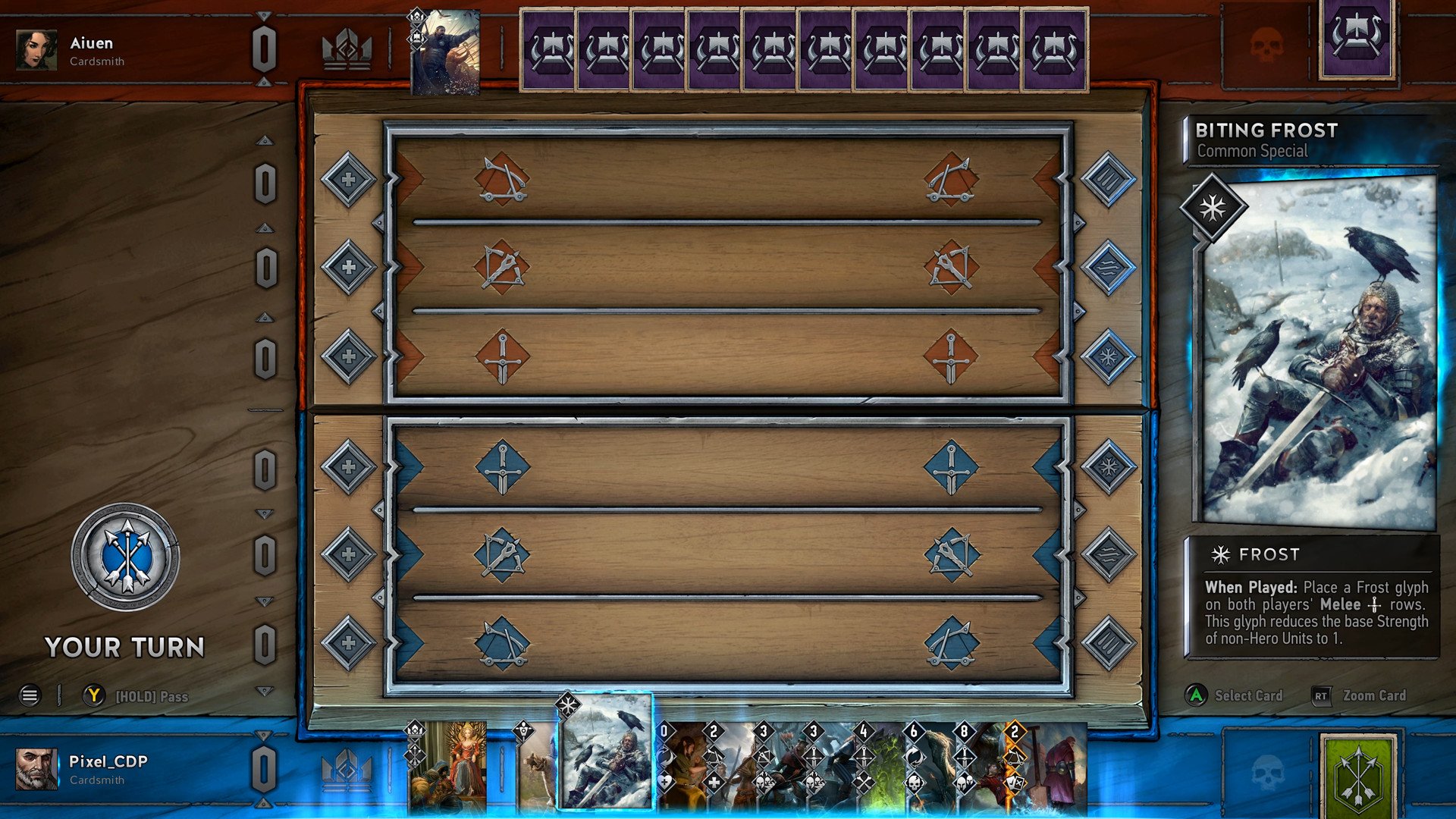
After the cutscene, Gwent opened up into a full isometric map, reminiscent of games like Final Fantasy 6 and Wasteland 2. You can guide Geralt around as you might expect, traveling about the forest and exploring locations. In the demo, the party found some elven ruins, represented by a wonderfully detailed static scene, complete with voiced narration. The demonstrator was presented with the choice of investigating or leaving. Upon examining the ruin, Geralt uncovered a Scorch bomb, which then joined the deck as a playable card.
All the characters and items you find in the story are represented in your deck as cards usable in battle, and character cards speak lines when they are put into play, and further the story during conflict.
Geralt and his mercenary band eventually found the edge of the forest, only for Torina to transform into a demon named Zaphire, who then proceeded to attack.
Combat takes place in a card battle, as you might expect, and the bosses you're fighting become leader cards for the enemy team. As you fight, characters offer advice and make comments when their cards are used. For example, when the Scorch card is played, Geralt remarks about how it was a good idea to have searched the elven ruins earlier.
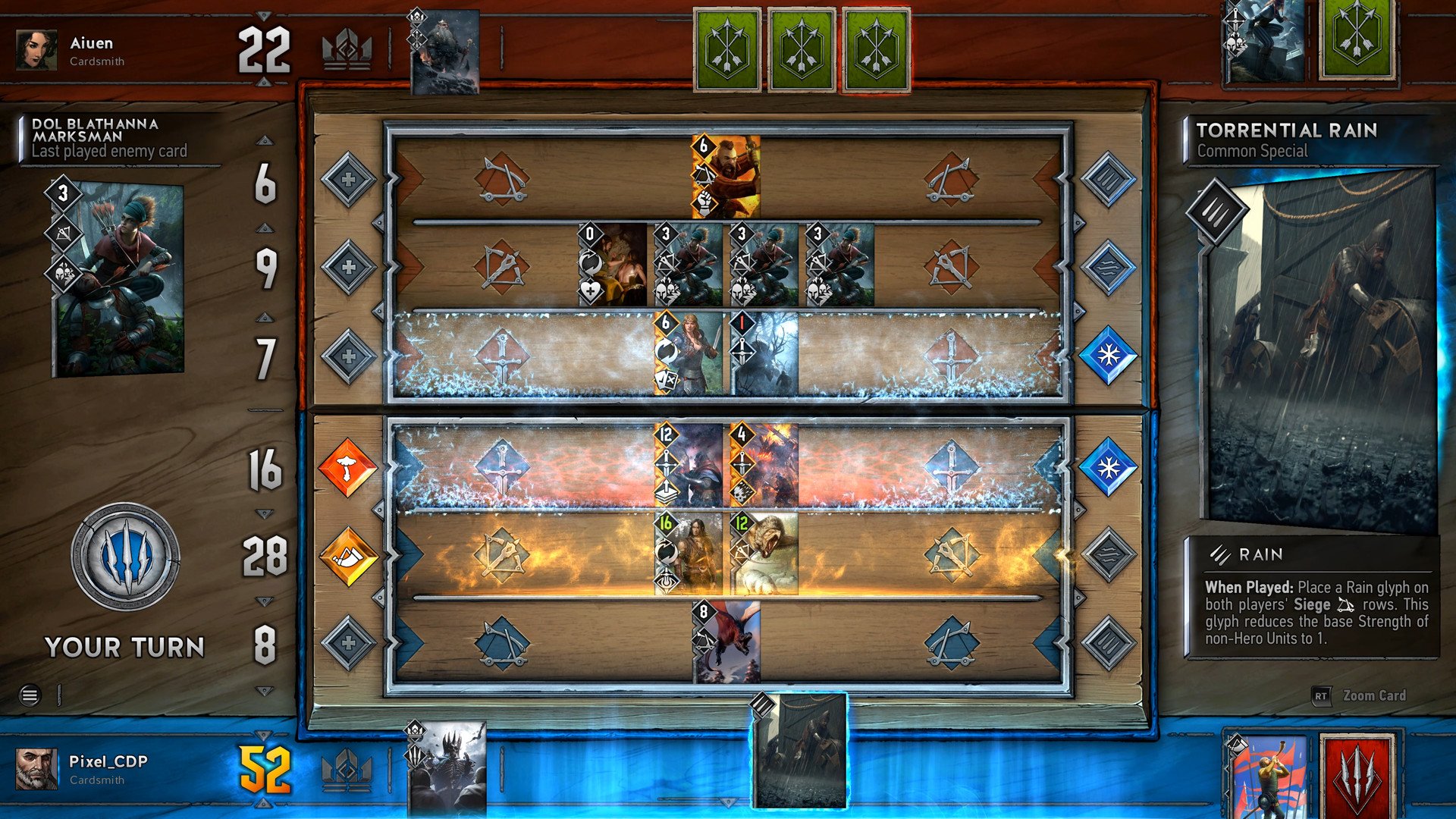
CD Projekt RED noted that decisions would be very typical of a Witcher game, and not restricted to something as simplistic as searching some ruins or not. Our demonstrator mentioned that later, you might have to choose between saving a child or your best friend, and those decisions would impact the campaign as you proceed.
The campaign for Gwent clocks in at around ten hours, but the way our demonstrator spoke, she made it sound as though they already have new campaigns planned for the future. The quest designers who worked on The Witcher 3 are working on Gwent too, and the quality was readily apparent even from our brief demonstration.
Gwent: Bye bye life
As someone who missed the boat when it came to Hearthstone, the idea of getting into Gwent at the ground floor is thoroughly enticing. While CD Projekt RED emphasized that your decks from The Witcher 3 would be useless in Gwent, it was still more than familiar enough for me to pick up and play (and win) without a lengthy tutorial.
The parallax style art is stunning, the gameplay seems solid, and the campaign features push the typically free-to-play genre to another level. CD Projekt RED have once again shown their intentions to go beyond expectations with their games, and it makes me all the more excited for their upcoming sci-fi RPG, Cyberpunk 2077.
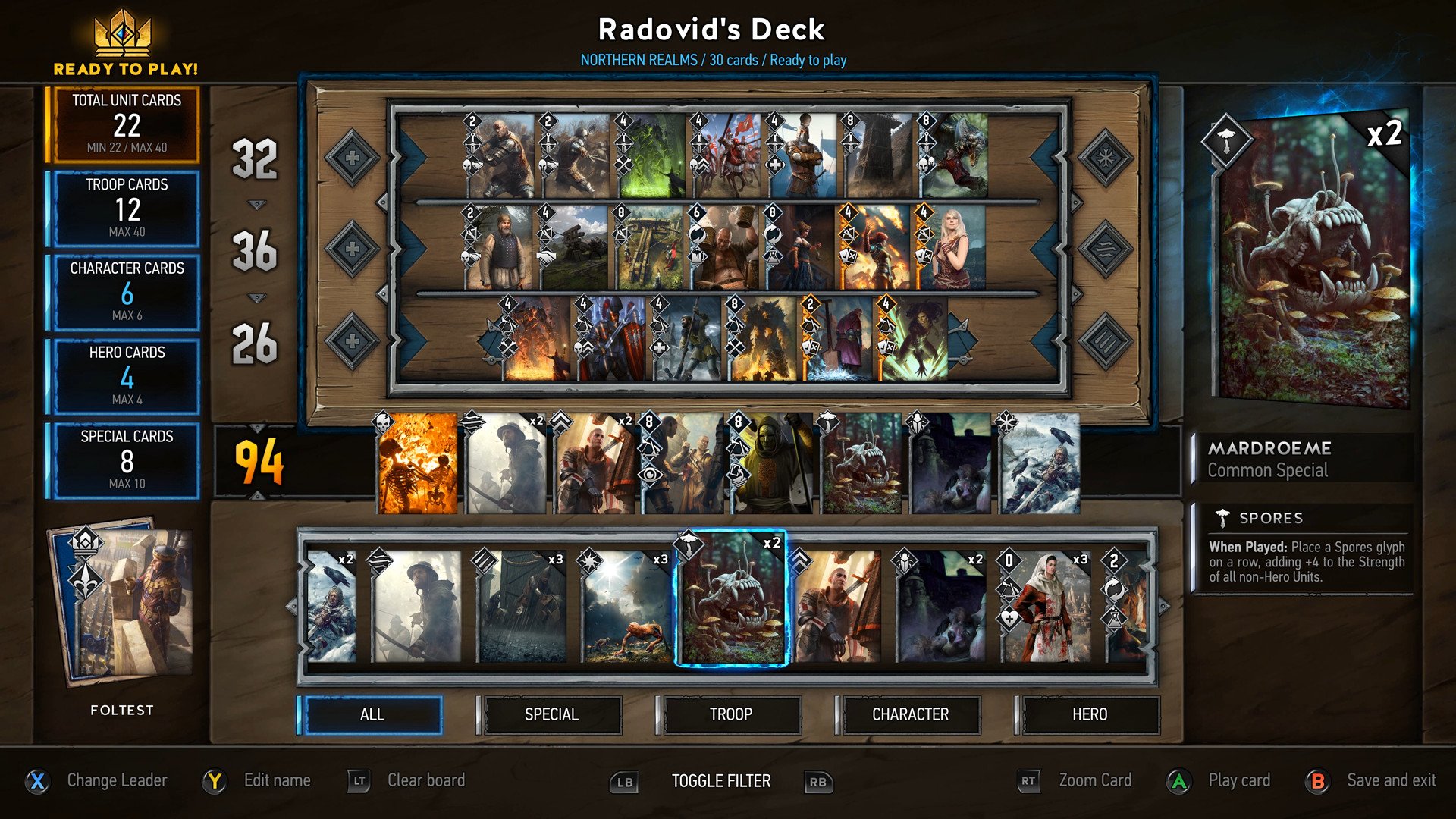
Perhaps the greatest thing about Gwent is that it ensures The Witcher series won't fade into the background and be forgotten. If successful, new decks, new campaigns and new features will appear in Gwent long into the future, much like Hearthstone, ensuring that we'll see more of Geralt and his band of misfits for years to come. I still haven't completed The Witcher 3's final DLC 'Blood and Wine', but now, I feel like Witcher fans no longer need to feel like 'this is the end' when the credits roll.
Gwent is arriving on Xbox One and PC as a closed beta in September, with a PS4 version to follow afterwards. For a chance to get in, you can sign up with your email address. Gwent will use a free to play model similar to other card games, but the details aren't fully set in stone.
Will you try out Gwent? Are you a trading card game fan? Let us know in the comments!

Jez Corden is the Executive Editor at Windows Central, focusing primarily on all things Xbox and gaming. Jez is known for breaking exclusive news and analysis as relates to the Microsoft ecosystem while being powered by tea. Follow on Twitter (X) and tune in to the XB2 Podcast, all about, you guessed it, Xbox!
